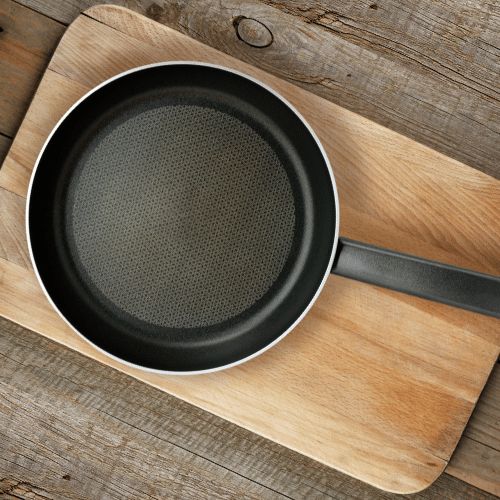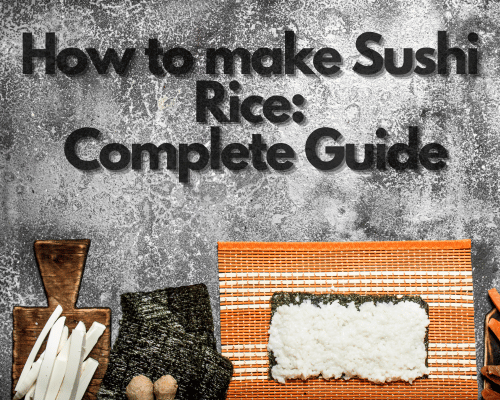Kitchens are an essential part of every household, and all kitchens need some cookware to be used daily. However, some specialized cooking articles have dedicated uses and purposes. People who like to be particular about their cooking prefer to cook in the right pan for whatever food they are preparing. The most complicated thing to figure out while cooking in your kitchen is whether you need a skillet or a frying pan.
People face a common issue in deciding how do a skillet and a fry pan differ from each other and which one they should use. Let us help you in this regard and point out some significant differences between a skillet and a frying pan to make your decision easier. After reading this, you will be able to determine whether you should prepare certain foods in skillets or they would come out better if cooked in a frying pan.
What is a skillet?

Skillet pan has slanted edges and is generally used in hands-on cooking where you are constantly stirring the ingredients. It is usually used to make stir fry or food prepared using quick-cooking techniques. Skillet is perfect cookware to prepare fish and pasta. The skillet is ideal for distributing heat evenly, which helps in quick food preparation.
What is a frying pan?

A fry pan is a flat-bottomed pan that is used majorly for frying, browning or searing food items at moderate to high heat. Generally, the diameter of a frypan ranges from 20 to 30 cm, and they have low slanting sides and a long handle. Frying pans do not come with a lid and are made of sturdy material that can handle and conduct high heat evenly.
These two seem pretty similar, making you think that fry pan and skillets are the same. But that simply cannot be true because they both have very distinct names. Well! It is true. Both the frying pan and a skillet are the same thing practically. However, a lot of fuss is created on their differences, but they are essentially the same things.
Then how do a skillet and a frypan differ?
A skillet and a fry pan are basically the same things; however, the differences lay in the terminology. Cooking aficionados are of the opinion that this difference lies in the use of the words “pots and pans” when they are used to refer to the cookware. Some further additions to these names are sheet pans, sauce pans, bundt pans, cake pans, roast pans, etc. So, with all these types of pans, it can be confusing for your kitchen.
Even in a professional chef’s kitchen, the word pan does not refer to a frypan; instead, it is used for a sauté pan. Experts believe that these names and dedicated pans for cooking special food items are the real reason for all this confusion.
Similarities between a skillet and a frying pan
Skillet and a fry pan have a lot in common between them. Here we are highlighting the commonalities in the skillet and fry pan.
Design
Both the skillet and the fry pan are similar in design. They have slightly sloped sides that spread outwards.
Purpose
Skillet and a fry pan both can only accommodate shallow frying. However, they are equally good at stir-frying.
Best for
These two are preferred for grilling steaks or even scrambling eggs over a stovetop perfectly.
Material
Skillets and fry pans come in a variety of materials such as stainless clad metals, carbon steel, or cast iron. These materials have the ability to distribute the heat to prepare food nicely on flame.
Versatility
These cookware items are available on non-stick surfaces to facilitate the cooking process and make cleaning the utensils easier.
Accessories
They both do not have any accessories, i.e., they do not have a lid to cover the food while cooking.
All of these similarities point out that a fry pan and a skillet are one and the same. But if we are really splitting hair, different types of skillets and fry pans are available in the market. These differences generally lie in the kind of material used for these pans, so let’s look at them.
3 types of skillets, best food item to cook, and how to clean them:
Skillets are available in three standard types as mentioned below, along with the kinds of food they are used to prepare, and cleaning requirements:
Cast Iron Skillet
- These skillets are made of cast iron. They take time to heat up and similarly remain hot for a while. However, it is good to spread the heat evenly.
- Cast iron skillets are best for preparing meat with seared crust such as steak or chops. However, these cast iron pans are avoided to make food that is acidic in nature, such as tomato sauce.
- To clean a cast iron skillet, you can wipe or scrub them with hot water. For the burnt bits that are stuck on, try to rub them off with half a cup of kosher salt and rinse off with water.
Stainless Steel Skillet
- As the name suggests, these are made of stainless steel. It is an alloy that does not rust or chip at all, and it does not react with food. It is suitable for even heat and warms up faster than a cast iron skillet.
- These stainless steel skillet pans are ideal for everyday cooking. You can prepare all your veggies and meats in them. You can even use them to stir fry or create a decent crust.
- Stainless steel skillets can be difficult to clean when the food is burnt in them. However, if you boil them by adding water and one tablespoon of distilled white vinegar for around 15 minutes, they will be far easier to scrub and clean.
Non-stick skillet
- Aluminum is the material used in non-stick skillets. These pans are coated with multiple layers of PTFE which is the non-stick polymer. These are popular because they are much less toxic when compared to Teflon. These skillets heat up and cool down pretty quickly.
- This particular pan is ideal for preparing phrasal food such as breaded cutlets, fish fillets, crepes, eggs, etc.
- Before cooking in a non-stick skillet, if you rub half a teaspoon of oil in the pan, you can clean it using a tissue after you are done. However, you can also use a plastic brush as it does not scratch the non-stick surface.
8 types of the fry pan and what foods you can prepare in them:
Since we have established that the fry pans and skillets are the same, we will skip the three types of frying pans already discussed, i.e., cast iron fry pans, stainless steel, and non-stick fry pans. Following are the 5 additional types of frying pans available in the market.
Ceramic Fry Pans
These ceramic pans are in fashion these days as they are non-stick but treated with silica gel made of ceramic stone or sand. These are lightweight and can endure high heat easily. They are the best to use on the stovetop but do not do well when combined with metallic utensils as they are prone to scratches.
Hard Anodized Fry Pans
These pans are made of aluminum; however, they are treated carefully to make them durable and significantly harder than generic aluminum pans. These pans are actually non-stick but able to endure high temperatures without damage. These hard anodized frying pans are heavy, expensive, long-lasting, and scratchproof. You can simply cook anything at all in them.
Carbon Steel Fry Pans
Carbon steel pans are lighter and thinner than cast iron frying pans. They gain and lose heat quickly. They are ideal for providing heat evenly and can be used in an oven. However, they are prone to rust. They can be used to prepare a wide range of food items that require shallow frying.
Aluminum Fry Pans
These frying pans are pretty affordable as aluminum is readily available in nature. They are incredibly efficient at conducting heat and heat up even faster than your stainless steel fry pans. They are pretty strong but lightweight and are used for sautéing and frying. But they are not ideal for preparing alkaline or acidic foods as they can lead to corrosion of the material.
Copper Fry Pans
Copper is an excellent material for a fry pan as it is a perfect conductor of heat. Copper can heat up and cool down pretty quickly; preventing the food from getting burnt if it is not removed from the pan right away. They are actually the opposite of cast iron fry pans and cannot stand too much heat. They are perfect for preparing sauces, sautéing, and cooking seafood.
Now that you have all the information at hand regarding how a skillet and a fry pan differ from each other, you will be better equipped to decide which type of pan material is ideal for you when you go cookware shopping next time.

Hey There, I’m Monica, Mom of two. This is my personal blog site. Here I write about Kitchen Tips Tricks, Recipes, and Review the products I use.
I hope you enjoy the article. Give me feedback on how I’m doing with my blog. I would appreciate it so much.
Have a great day! 🙂
[Follow me on Twitter]


